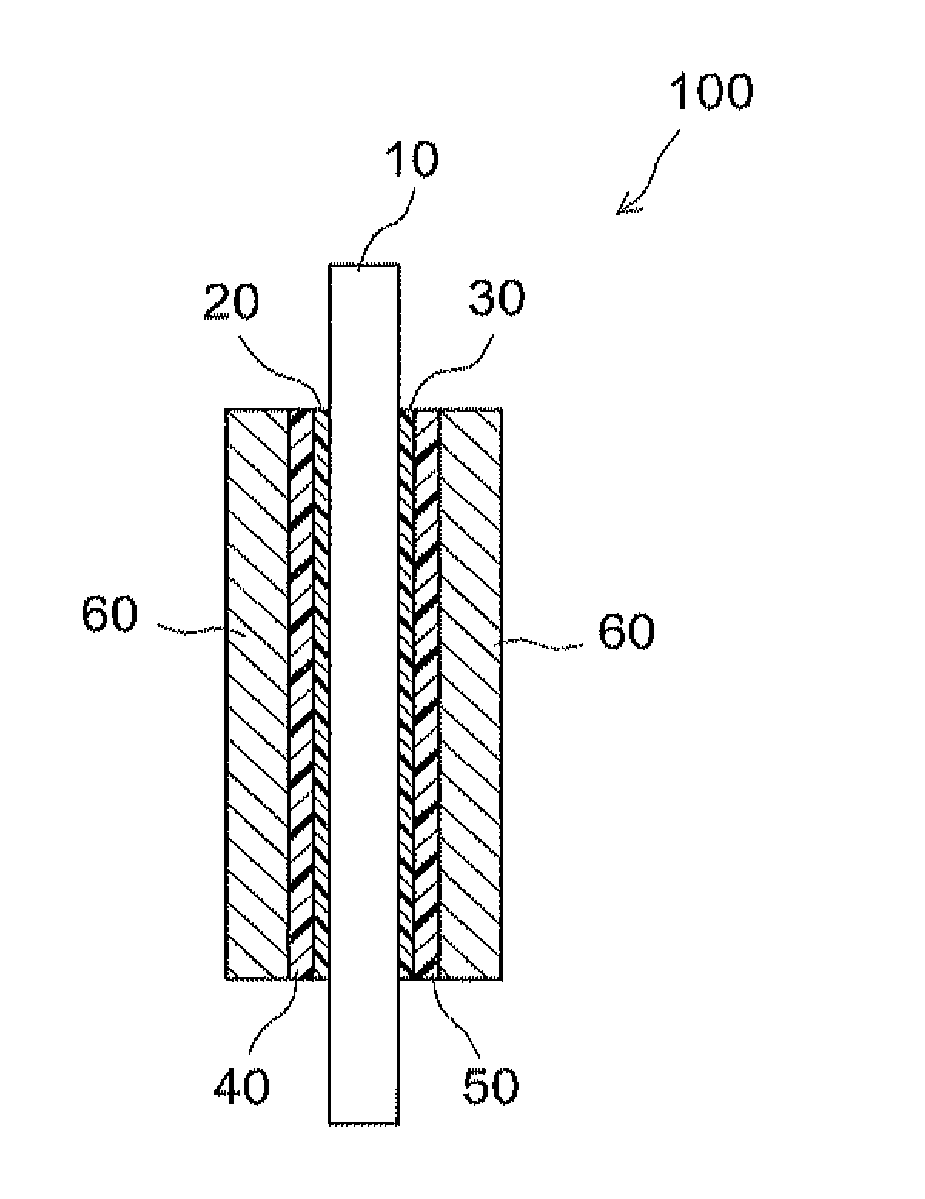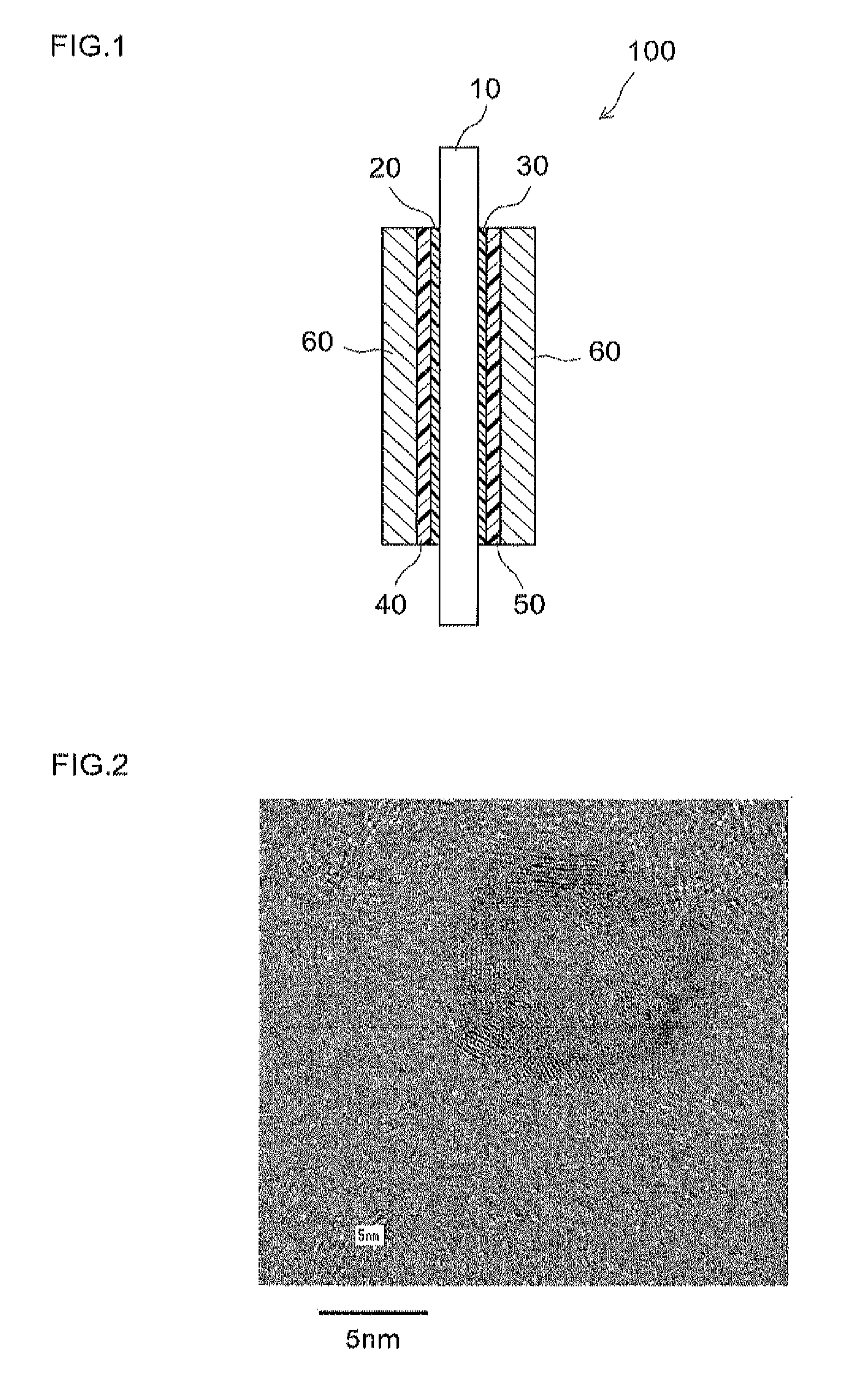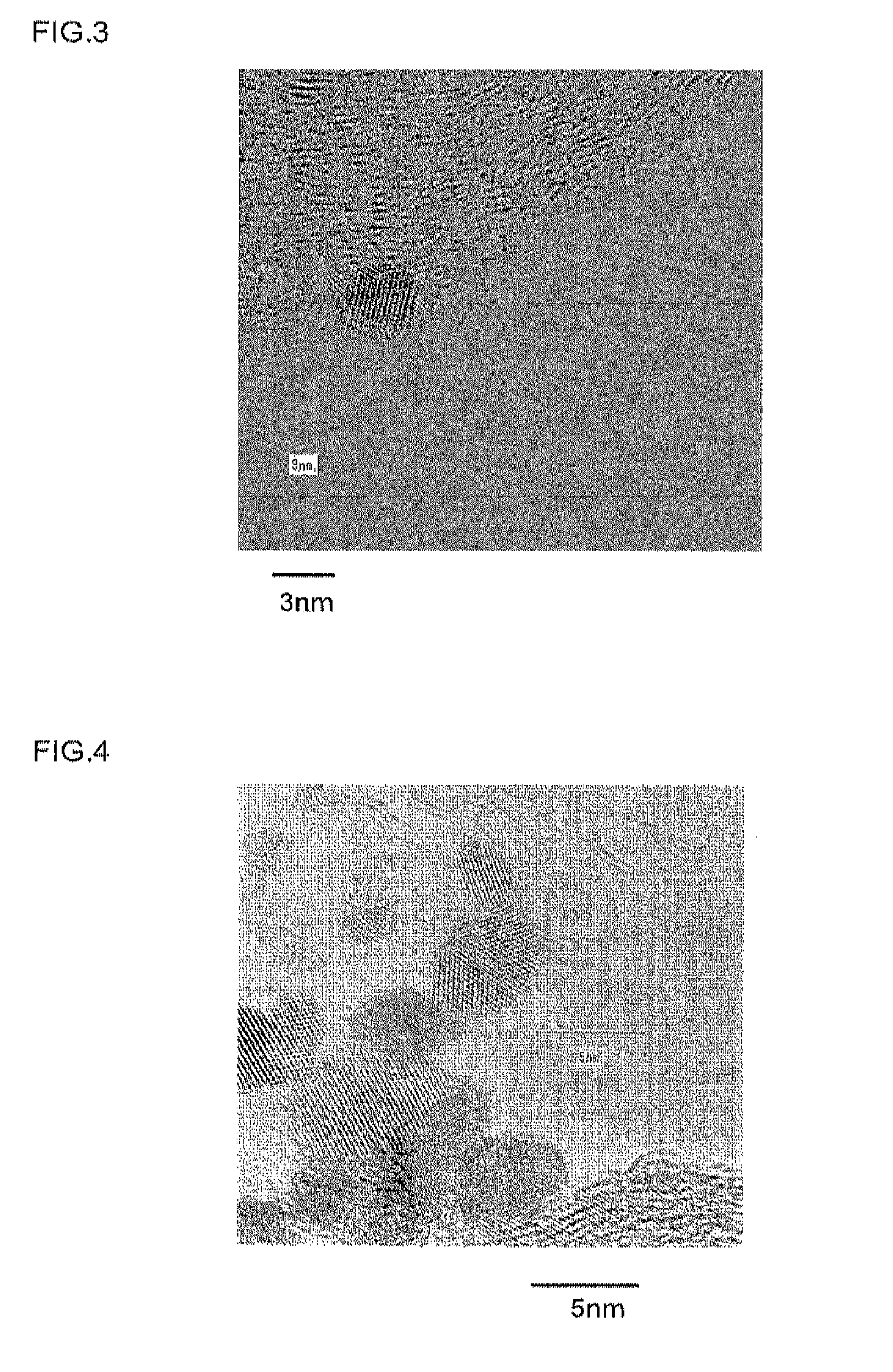Catalyst carrying fine metal particles and use thereof
a technology of catalysts and metal particles, which is applied in the direction of metal/metal-oxide/metal-hydroxide catalysts, physical/chemical process catalysts, cell components, etc., can solve the problems of insufficient deposition of precious metal elements, difficult production, and particle diameter, so as to reduce the use of precious metals, suppress the effect of cost increase and useful especially in cost performan
- Summary
- Abstract
- Description
- Claims
- Application Information
AI Technical Summary
Benefits of technology
Problems solved by technology
Method used
Image
Examples
example 1
[0076]As a non-precious metal, nickel was used and as a compound containing nickel, a nickel salt, nickel(II) chloride hexahydrate (NiCl2.6H2O) was used. Here, 1.2 g of nickel(II) chloride hexahydrate (NiCl2.6H2O) was dissolved in 7 mL of pure water to prepare a 1 M aqueous nickel chloride solution. On a hot plate stirrer, the aqueous nickel chloride solution was stirred at a temperature of 40° C. and a stirring speed of 250 rpm. Subsequently, to the stirring aqueous nickel chloride solution, were added 5.0 g of hydrazine hydrate (N2H4.H2O) as a complexing agent and 0.015 g of sodium citrate dihydrate (Na3C6H5O7.2H2O) as a reducing agent. After 1.5 g of carbon black (available from Cabot Corporation, product name: Vulcan XC72), which was a carbonaceous carrier, was added as a conductive carrier, 5.0 g of 50 weight % aqueous sodium hydroxide solution was added as a pH adjusting agent until around pH 9.
[0077]Here, before adding a precious metal to the aqueous solution, nickel chloride...
example 2
[0080]Here, an aqueous solution was prepared in the same manner as Sample 1 and after reducing the compounds in the aqueous solution, precipitated particles were collected. Here, however, hydrogen hexachloroplatinate(IV) hexahydrate was dissolved in the aqueous solution immediately (at about 0 minute to 20 minutes in this case) after adding the reducing agent to the aqueous nickel hydroxide solution. Hereinafter, the fine metal particle-carrying catalyst obtained by this process is referred to as Sample 2.
example 3
[0081]In this example, too, an aqueous solution was prepared in the same manner as Sample 1 and after reducing the compounds in the aqueous solution, precipitated particles were collected. Here, however, hydrogen hexachloroplatinate(IV) hexahydrate was dissolved in the aqueous solution twenty hours after adding the reducing agent to the aqueous nickel hydroxide solution. Hereinafter, the fine metal particle-carrying catalyst obtained by this process is referred to as Sample 3.
[0082]Samples 1 to 3 obtained by the production processes described above were analyzed by transmission electron microscopy (hereinafter, referred to as “TEM”). The resulting TEM photos are shown in FIGS. 2 to 4. FIG. 2 shows a TEM photo of Sample 1, FIG. 3 shows that of Sample 2 and FIG. 4 shows that of Sample 3. In these TEM photos, transmission images of metal particles supported by a conductive carrier particle can be observed. Of the observed metal particles, the dark parts correspond to platinum and the p...
PUM
| Property | Measurement | Unit |
|---|---|---|
| Particle diameter | aaaaa | aaaaa |
| Particle diameter | aaaaa | aaaaa |
| Electrical conductor | aaaaa | aaaaa |
Abstract
Description
Claims
Application Information
 Login to View More
Login to View More - R&D
- Intellectual Property
- Life Sciences
- Materials
- Tech Scout
- Unparalleled Data Quality
- Higher Quality Content
- 60% Fewer Hallucinations
Browse by: Latest US Patents, China's latest patents, Technical Efficacy Thesaurus, Application Domain, Technology Topic, Popular Technical Reports.
© 2025 PatSnap. All rights reserved.Legal|Privacy policy|Modern Slavery Act Transparency Statement|Sitemap|About US| Contact US: help@patsnap.com



